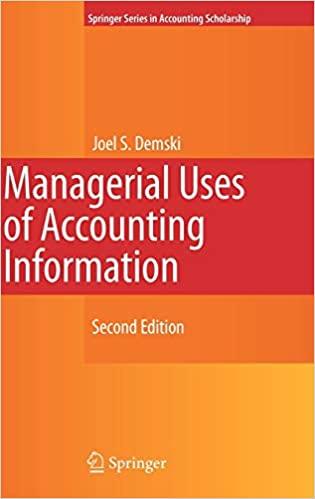9. marginal versus unit cost Ralph manages a two product firm. The technology requires a mixture of...
Question:
9. marginal versus unit cost Ralph manages a two product firm. The technology requires a mixture of capital and labor to produce each product. Capital is shared,
while labor is specific to each of the two products. For the first product, capital (K) and labor (L1) must satisfy q1 ≤ √KL1 in order to produce q1 units. Likewise, producing q2 units of the second product requires capital (K) and labor (now L2) such that q2 ≤ √KL2. Total capital is limited to a maximum of 200 units, so K ≤ 200. In addition, once either product is sold it is removed from inventory and packaged for shipping. This packaging requires B boxes such that q1 + q2 ≤ B. Ralph will produce and sell q1 = 200 and q2 = 100 units. Capital (K) costs 300 per unit, labor costs 250 per unit for the first product (L1) and 400 per unit for the second product (L2), and packaging (B) costs 50 per unit.
(a) Determine the optimal factor combinations, the total cost and the marginal cost of each product.
(b) Determine the shadow prices associated with each of the constraints in the optimization program in
(a) above.
(c) Determine the unit cost of each product. For this purpose, treat all of the factor costs as product costs. The two labor cost pools will be direct cost pools of course. You should assign the capital cost to products on the basis of the relative direct labor costs.
(d) Write a brief paragraph discussing the connection between marginal and unit costs in this setting.
Step by Step Answer:






